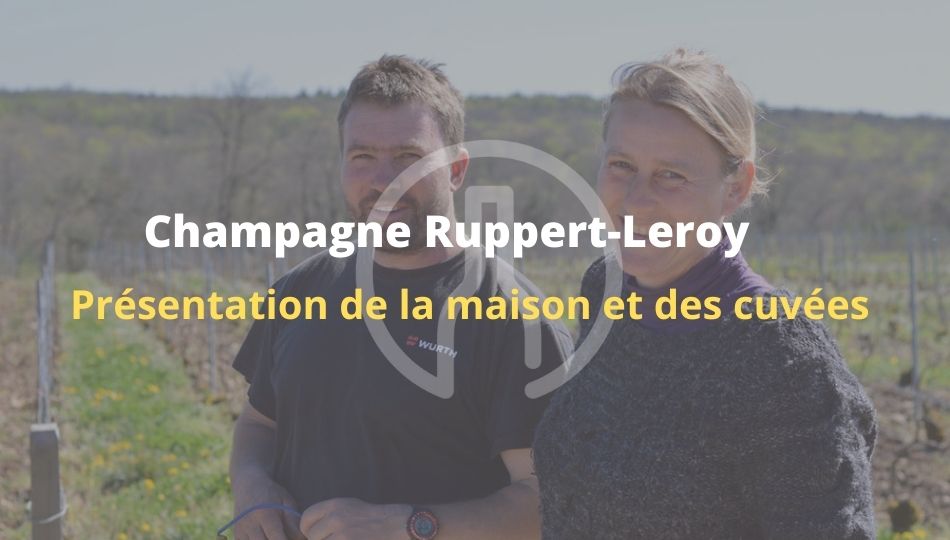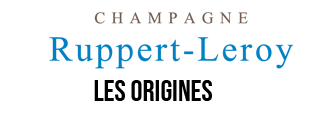Do you know Maison Ruppert Leroy? Let us introduce you to this superb Champagne estate. Each cuvée is more sparkling than the next. Discover this beautiful house with our guide! You can also see all our guides to the finest French wine estates:
Where does this fine Champagne house come from?
A new generation of winemakers set up shop in the Aube, a department on the southern border of the Champagne region. Their aim was to preserve the expression of terroirs by abandoning all kinds of indecent practices. This is the path that Gérard Ruppert and his daughter Bénédicte Leroy whose vines are planted according to biodynamic principles. The Ruppert-Leroy estate is located in the south of the appellation, near the village of Essoyes, far from Reims, and just 5 kilometers from Burgundy wine country.
After completing his doctorate in philosophy in 1970, Gérard decided to work the land, starting out by raising sheep. In 1980, he decided to plant half a hectare of vines. Unlike most of his colleagues, he was already involved in organic farming. He sold the fruit of his labor to the local cooperative until his retirement. Today, his daughter and son-in-law have taken over the reins of the estate and make their own wines from four hectares. In recent years, the vineyard has been converted to organic farming. They remain in the cause of fervent advocates of the natural wine movement such as Jules Chauvet, Pierre Overnoy and Bertrand Gautherot de Vouette et Sorbée. Thanks to the latter, they have relentlessly tested the means that might suit their own styles as winemakers. Bénédicte and Emmanuel Leroy combine the quality of the wine with the quality of the grapes. For them, the most important thing is to preserve the health of the soils, and the authentic, healthy way in which they tend their vines. Before running the vineyard, Bénédicte Ruppert and Emmanuel Leroy attended secondary school in Bar-sur-Aube. In 2009, they began managing the vineyards leased by the former's family from the commune of Essoyes.
The new Ruppert-Leroy era
Under the guidance of Pierre Masson, they began practicing biodynamics the following year. Each of the lieux-dits is vinified individually in barrel, with no added sulfur and no blockage of malolactic fermentation. The purity of the fruit is present, with a creamy texture despite the absence of dosage. An already convincing quest for purity. Emmanuel Leroy and his wife Bénédicte Ruppert have moved to Essoyes, in the heart of a little-known area of the countryside where the limestone soils of the Côte des Bars meet the Chablisien and the true Avize. They began in 2009, with the few vines owned by Bénédicte's parents. Having been gymnastics teachers in a previous life, they forgot the floor mats to devote themselves solely to wine production. For them, the important thing is to produce good, balanced wine without deficient grapes. Their entire estate is populated by trees, plants, cows and goats. The vegetable garden feeds the family, but more than 35 seedlings feed the vines. The couple go to great lengths to preserve their vines in accordance with biodynamic principles. The vineyard is aerated and cleared, and composts, decoctions and horn dung are made on site. This preparation contributes to the richness and quality of the soil. Through their work and determination, they transform a simple gesture in the soil into an artistic figure.
A prestigious vineyard for marvellous vintages
Champagne Ruppert-Leroy cuvées guide
Find the most famous champagnes of the House on our website. Visit Ruppert-Leroy bottles come directly from the estate and are available for immediate purchase, in stock and at the best price on Comptoir des Millésimes. But before tasting, here's some valuable information about these little Champagne nuggets.
-
Cuvée Fosse Grely - Nature - Ruppert-Leroy:

This cuvée comes from the La Fosse parcel, on clay-limestone soil with a majority of red clay. The blend is made up of 50 % Pinot Noir and 50 % Chardonnay. This is a brut nature with no added sulfites. Fermentation is alcoholic and malolactic, and the wine is aged on lees in barrels and demi-muids for 9 months. Aging takes place for 18 to 20 months in bottles on laths. The palate is very round, with notes of citrus, quetsche, vine peach, fennel, mint and licorice. It's greedy, with a long, subtle, bitter mouthfeel and a mineral finish.
-
Papillon - Pinot Noir Brut Nature - Ruppert-Leroy:

This cuvée comes from the La Fosse parcel, on clay-limestone soil with a majority of red clay. It's a pure Pinot Noir and a brut nature with no added sulfites. Aged on lees and demi-muids for 9 months. Alcoholic fermentation is followed by 18-20 months bottle ageing on laths. This cuvée releases notes of ripe blood oranges, baked apples, peaches and red fruits. It has a frank, greedy attack with creamy bubbles.
-
Les Cognaux - Pinot Noir Brut Nature - Ruppert-Leroy:
It is made exclusively from Pinot Noir grapes from the Cognaux parcel, located in the Essoyes terroir on the Côte des Bars. The soil is essentially composed of grey clay, which produces aromatic grapes with great freshness. The wine is aged in barrels and demi-muids for 9 months before bottling. Bénédicte and Emmanuel Leroy produce wines with as little intervention as possible, so no sulfates are added and malolactic fermentation is natural. The cuvée is ready to drink after two years. It is a brut nature, with no dosage. It has a brilliant golden color. Its bubbles are fine and lively. The nose has lovely notes of fresh fruit (wild strawberries, plums, nectarines, ripe lemons). This champagne offers excellent volume on the palate. It has a silky texture with a fine minerality.
We hope you've enjoyed this article. And now for the tasting! (Definitely the best part.) We're lucky enough to work directly with the domaine's cellar. Their champagnes are delivered directly from the winery. Find out more about authentic Domaine Ruppert-Leroy bottles from the estate on Comptoir des Millésimes :










